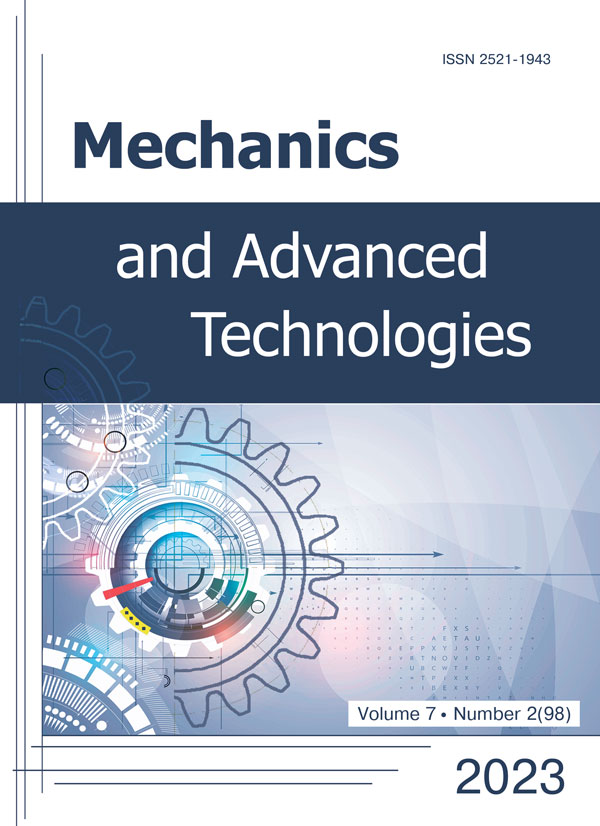Detailing the idea of the design process of hydraulic automation objects
DOI:
https://doi.org/10.20535/2521-1943.2023.7.2.287524Keywords:
design process, simulation, design time reducing, hydro automaticsAbstract
The work is touched to the design methods of the complex technical objects. The reason of the objects complication is the requirement of the dynamical processes coordination because the planed characteristics are needed. The main design stages idea – circuit diagram – simulation – structure are considered. The means of the design stages information representing of traditional approach are the relatively commonly and not consistent. It leads to design time increasing. In this work to structure the design information, coordinate the means of the different stage information representation with each others and detail design process are proposed. To do it the common information space of knowledge of the subject aria are separated on the streams. The streams represent information about the content, uniting, activities and requirements. The design process is represented as the transactions chain. Each transaction is based on the named streams and successively forms the state of the resulting functional stream. These states reflect the readiness levels of the designed object. Due to this way of means representation and detailing of information the coordination between different stages was provided. There are the possibilities to check the stage correctness executing also. As result the iteration reducing and time consumption of the design process are reached. The design process is illustrated by the example.
References
- Grady Booch, Object oriented design with applications. Redwood City, CA: Benjamin-Cummings Publishing, 1991, 580 p.
- VDI 2206: Design methodology for mechatronical systems. Beuth, Berlin, 2004.
- A. Ertas and J. C. Jones, The engineering design process. John Wiley & Sons, 1993, 525 p.
- R. Dudziak, C. Kohn and R. Sell, Integrated systems and design. Tallinn: Tallinn University of Technology Press, 2008, 208 p.
- E. Gorrostieta, J. Rodriguez-Resendiz, E. Vargas-Soto, L. A. Zuñiga-Aviles and S. Tovar-Arriaga, "Mechatronics methodology: 15 years of experience", Ing. Investig., vol. 35, no. 3, pp. 107-114, 2015. DOI: https://doi.org/10.15446/ing.investig.v35n3.47543.
- J. Johnson and A. Henderson, Conceptual Models: Core to Good Design. Cham: Springer International Publishing, 2012, 96 p. DOI: 10.1007/978-3-031-02195-4.
- F. Christophe, A. Bernard and É. Coatanéa, “RFBS: A model for knowledge representation of conceptual design”, CIRP annals, vol. 59, no. 1, pp. 155–158, 2010. DOI: https://doi.org/10.1016/j.cirp.2010.03.105.
- T. McCaffrey and L. Spector, “An approach to human–machine collaboration in innovation”, Artificial Intelligence for Engineering Design, Analysis and Manufacturing, vol. 32, no. 1, pp. 1–15, 2018. DOI: https://doi.org/10.1017/S0890060416000524.
- V. I. Skurikhin, V. G. Kvachev, Yu. R. Walkman and L. P. Yakovenko, Information technologies in testing complex objects: methods and means. Kyiv: Naukova dumka, 1990, 320 p.
- S. B. Tor, G. A. Britton and W. Y. Zhang, Functional modeling in conceptual die design. Technical Report 2003-1, MIT Alliance - Nanyang Technological University, Singapore, 2003.
- S. C. Dewhurst and K. T. Stark, Programming in C++. Englewood Cliffs, New Jersey: Prentice Hall, 1989, 233 p.
- J. De Kleer, “How circuits work”, Artificial Intelligence, vol. 24, no. 1-3, pp. 205–280, 1984. DOI: https://doi.org/10.1016/0004-3702(84)90040-7.
- J. De Kleer and J. S. Brown, “A qualitative physics based on confluences”, Artificial intelligence, vol. 24, no. 1-3, pp. 7–83, 1984. DOI: https://doi.org/10.1016/0004-3702(84)90037-7.
- J. S. Gero, "Design Prototypes: A Knowledge Representation Schema for Design", AI Magazine, vol. 11, no. 4, pp. 26-36, 1990. Available: https://johngero.com/publications/1990/90GeroDesignPrototypes.pdf.
- Y. Umeda, H. Takeda, T. Tomiyama and H. Yoshikawa, "Function, behavior, and structure", in AIENG '90 Applications of AI in Engineering. Southerton/Berlin: Computational Mechanics Publications/Springer–Verlag, 1990, pp. 177–193. Available: http://www-kasm.nii.ac.jp/papers/takeda/p90/umeda90fbs.pdf.
- Y.-C. Liu and A. Chakrabarti, “Physical realizations: Transforming into physical embodiments of concepts in the design of mechanical movements”, Advances in Mechanical Engineering, vol. 5, p. 318173, 2013. DOI: https://doi.org/10.1155/2013/318173.
- Y. Shimomura, M. Yoshioka, H. Takeda, Y. Umeda and T. Tomiyama, “Representation of design object based on the functional evolution process model”, Journal of Mechanical Design, vol, 120, no. 2, pp. 221–229, 1998. DOI: https://doi.org/10.1115/1.2826962.
- Yu Xia, Dongye Sun, Datong Qin and Wenfeng Hou, "Study on the design method of a new hydro-mechanical continuously variable transmission system", IEEE Access, vol. 8, pp. 195411-195424, 2020. DOI: https://doi.org/10.1109/ACCESS.2020.3005915.

- Farhan A. Salem and Ahmad A. Mahfouz, “Mechatronics Design And Implementation Education-Oriented Methodology; A Proposed Approach”, Journal of Multidisciplinary Engineering Science and Technology, vol. 1, no. 3, pp. 34-45, 2014. Available: https://www.jmest.org/wp-content/uploads/JMESTN42350081.pdf.
- D. C. Karnopp, D. L. Margolis and R. C. Rosenberg, System dynamic: a unified approach. New York: Wiley, 1990, 514 p.
Downloads
Published
How to Cite
Issue
Section
License
Copyright (c) 2023 Олександр Узунов

This work is licensed under a Creative Commons Attribution 4.0 International License.
Authors who publish with this journal agree to the following terms:
- Authors retain copyright and grant the journal right of first publication with the work simultaneously licensed under CC BY 4.0 that allows others to share the work with an acknowledgement of the work's authorship and initial publication in this journal.
- Authors are able to enter into separate, additional contractual arrangements for the non-exclusive distribution of the journal's published version of the work (e.g., post it to an institutional repository or publish it in a book), with an acknowledgement of its initial publication in this journal.
- Authors are permitted and encouraged to post their work online (e.g., in institutional repositories or on their website) prior to and during the submission process, as it can lead to productive exchanges, as well as earlier and greater citation of published work











